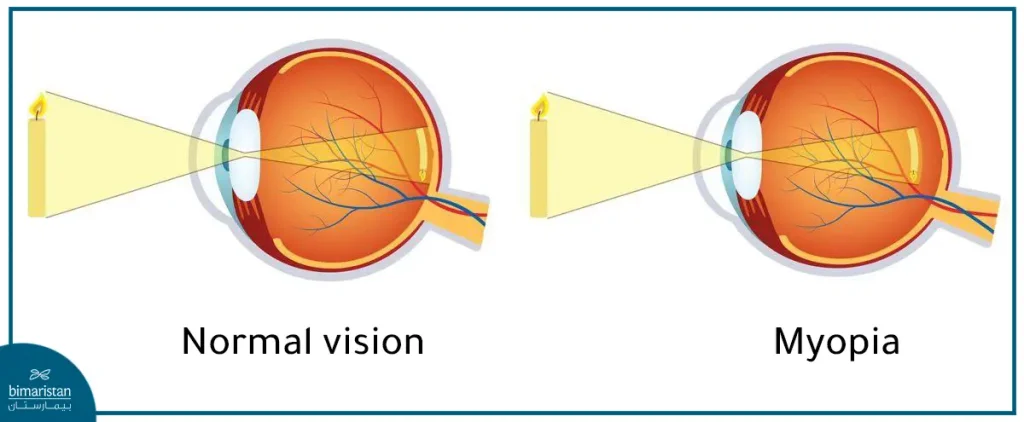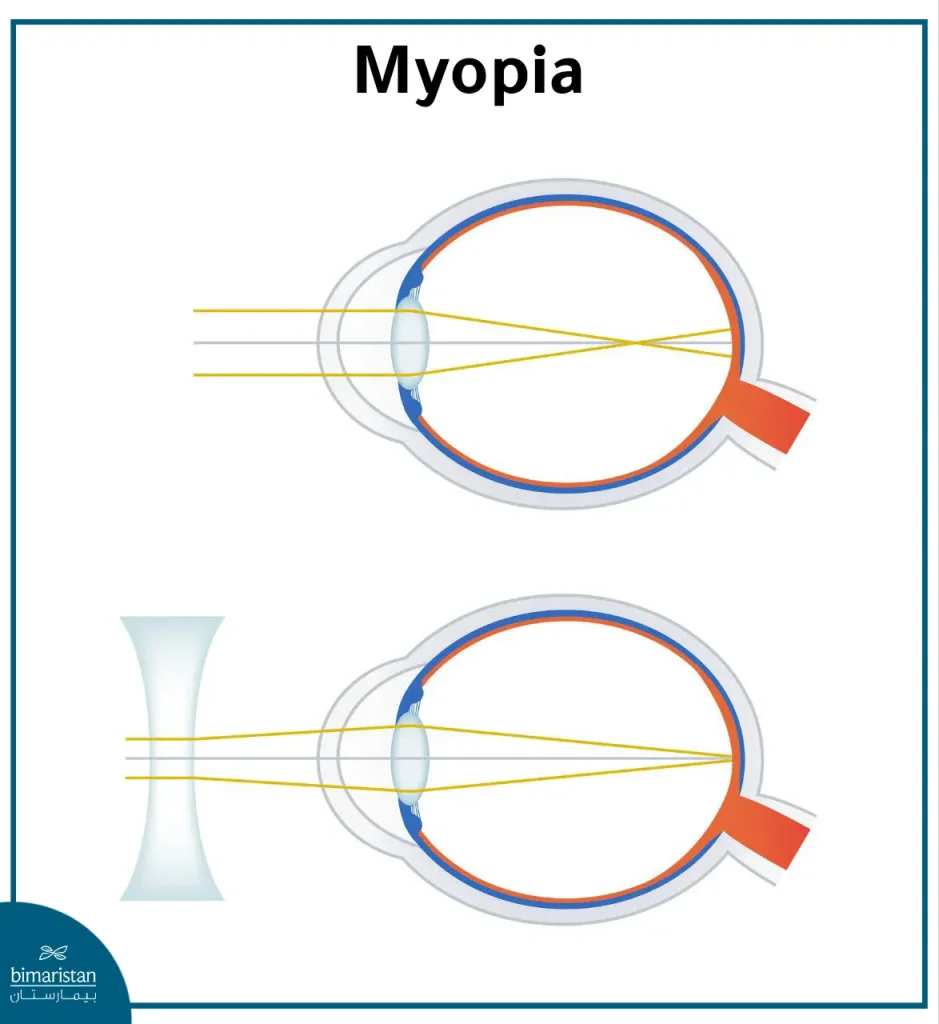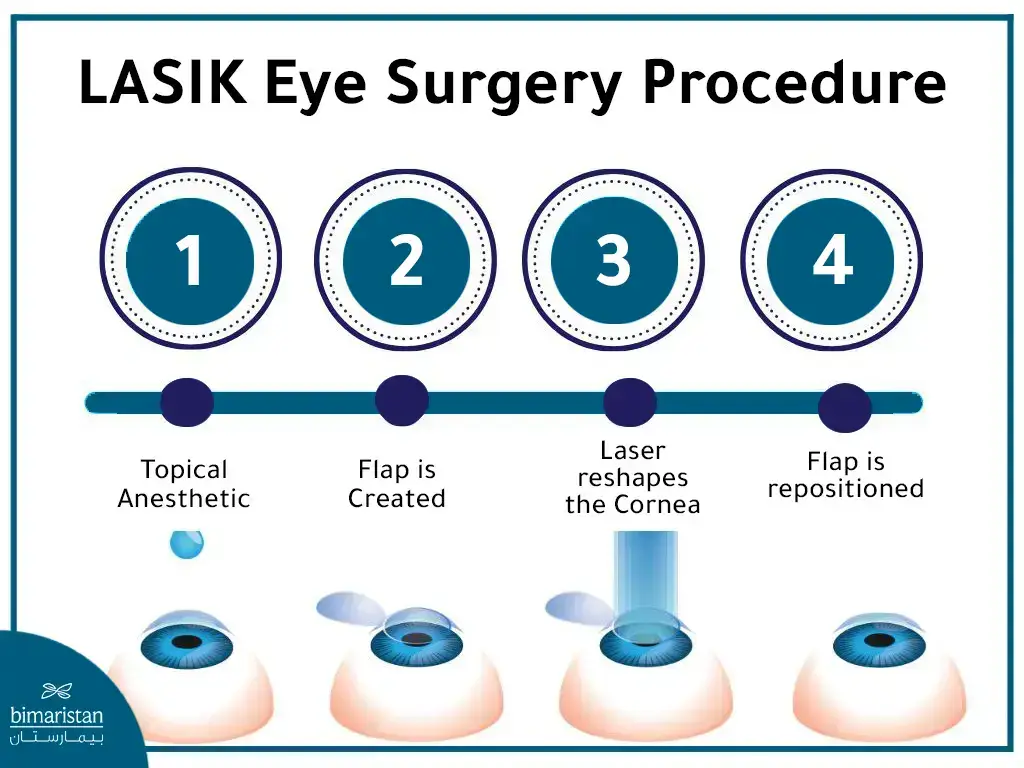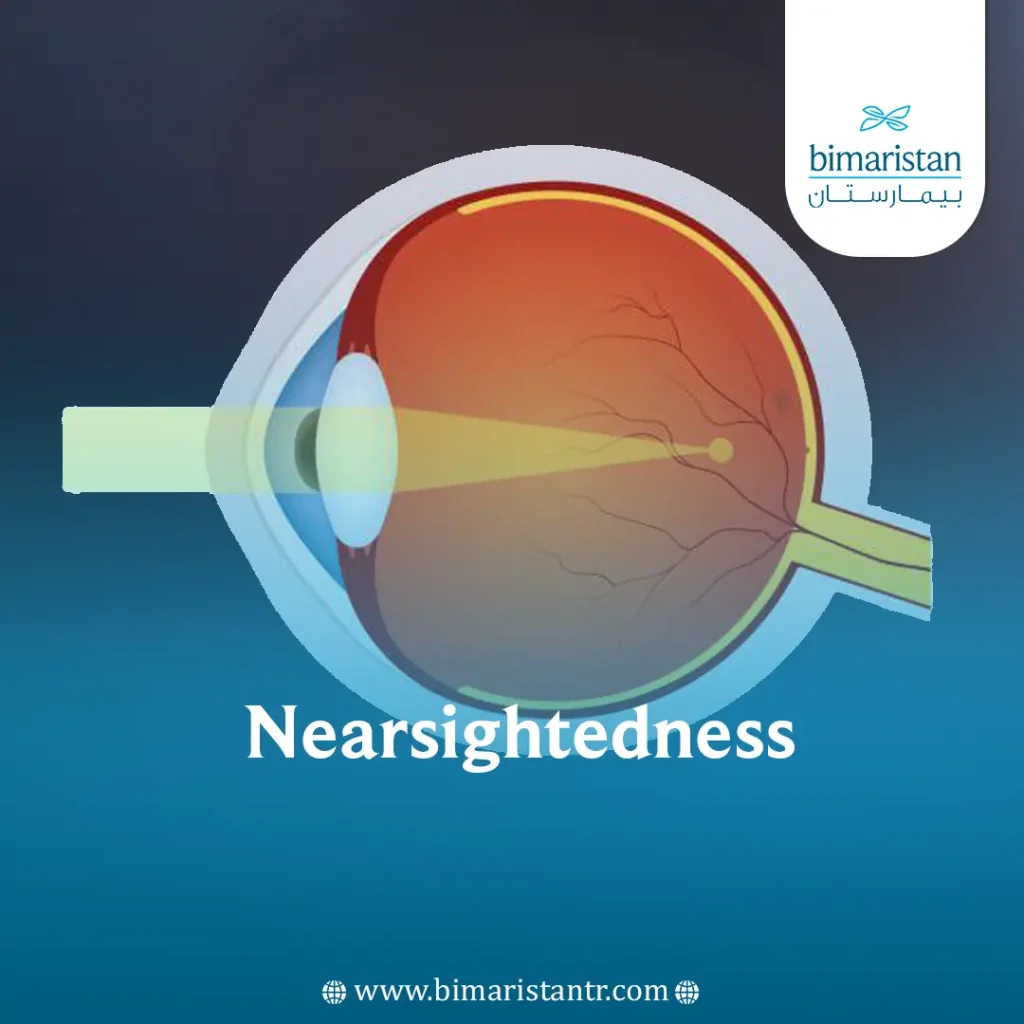Nearsightedness is one of the most common visual field defects, usually appearing at school age and increasing in adulthood.
What is nearsightedness?
Nearsightedness, or what is medically known as myopia, is a condition that affects the eye as a result of a refractive error that makes distant objects appear distorted and blurry, while nearby objects can be seen clearly.
Nearsightedness occurs when the eyeball is too long or the cornea is too curved, this means that light entering the eye will fall in front of the retina rather than on it.
As a result, the light is unable to focus properly on the retina. The picture drawn by the brain appears blurry and unclear.

Nearsightedness and farsightedness
Farsightedness is a condition that is opposite to nearsightedness, in which the light entering the eye is placed behind the retina, making the vision of nearby objects blurry and unclear.
Pseudomyopia
Pseudomyopia is an inappropriate over-accommodation of the eye due to overstimulation or spasm of the ciliary muscles, it can be a transient condition or may continue to develop into true myopia.
Head trauma is the most common cause, followed by neurological and psychological diseases such as generalized anxiety disorder.
Temporary blurring may also occur due to eye strain as a result of working for a long time.
Symptoms of nearsightedness
Nearsightedness one of the diseases that does not worsen quickly. However, there are some diseases, such as diabetes, that worsen the disease faster.
Symptoms include:
- Blurred vision when looking at distant objects
- Squinting to try to see better
- Rub your eyes frequently
- Frequent headaches
- Fatigue when driving or looking further than a few feet
Symptoms in children can also be observed through:
- Complaining about poor performance in school
- Short attention span
- Holding objects close to the child’s face
Causes of nearsightedness
No clear cause of this condition been identified, as experts believe that biological and environmental factors combine.
However, there are some factors that increase the likelihood of developing it, such as:
- Having a family history of the disease
- Do not spend a lot of time outside, as research shows that spending at least 90 minutes of time daily in the open air reduces the risk of developing myopia
- Spending a lot of time doing things close to the eyes, such as reading or using mobile phones
Complications of nearsightedness
Sometimes untreated nearsightedness can develop into more serious eye conditions, especially in children, such as:
Sometimes untreated nearsightedness can develop into more serious eye conditions, especially in children, such as:
- Zquint
- Lazy eye
As for adults who suffer from severe condition, they are more likely to suffer from the following:
- New blood vessels form
- Optic neuropathy
- Retinal detachment; The thin layer at the back of the eye becomes loose and this require urgent treatment to prevent vision loss
- Glaucoma
- Opacity of the eye lens
Degrees of nearsightedness
The degree of the disease is a parameter used to indicate the severity of mild or high condition.
It is used to give appropriate management according to the patient’s condition and to monitor the development of his vision.
Diopters are used to measure the curvature of the lens.
Degrees of the condition can be divided into:
- Mild: ranges from 0 to -1.5 diopters
- Moderate: measures from -1.5 to -6 diopters
- Severe: which starts from -6 diopters or more
Diagnosis of Nearsightedness
The disease can be diagnosed during a general eye examination, which is usually done during childhood but can develop in adults.
It is tested by placing different lenses in front of the eyes during the examination.
The examiner asks the patient to read letters on a board in front of him, this method is called: the Snellen method.
The eye doctor also uses an instrument called a phoropter to measure the eye’s focus of light using a lighted, hand-held instrument called a retinoscope.
This test can help determine how the eye responds under normal vision conditions.
In some cases, such as patients who cannot respond verbally, the doctor may use eye drops that temporarily prevent the focus from changing during the test.
Nearsightedness treatment in Turkey
Treatment includes several options which are corrective lenses, contact lenses, or surgery.
These methods help correct the refractive error or refocus the image on the retina.
Prescription glasses
It is the most common method for treating in children and adults, depending on the degree of correction required, as it uses concave-shaped lenses (negative lenses) that reduce the focusing power of the eye and are thinner at the center with increased thickness in the periphery.
People over the age of 40 may need a bifocal lens to see near and far objects clearly.

Contact lenses
Contact lenses provide wider and sharper peripheral vision than eyeglasses, but they require more care to maintain their sterility.
Ortho-k or CRT
This method is suitable for people who suffer from mild degree, as they wear rigid gas-permeable contact lenses while sleeping temporarily to reshape the cornea.
This provides clear vision during the day without glasses or contact lenses.
LASIK to treat Nearsightedness
The most common procedure for treating nearsightedness corneal refractive surgery, in which the doctor cuts a flap from the upper part of the cornea using a laser, reshapes the inner layers, and then puts the flap back in place.

LASEK
The ophthalmologist uses a laser to cut the flap through just the top layer of the cornea (epithelium), reshape the outer layers, and then close the flap.
The surgery takes about 10 minutes per eye and is usually a painless procedure and a return to normal vision is expected within a day or so of surgery.
LASIK surgery prices in Turkey
The price of LASEK or LASIK procedures ranges from approximately $500 to $1,500, in the best centers equipped with the latest equipment and in the hands of experts specialized in modern treatment techniques.
Photorefractive keratectomy (PRK)
It is a type of laser eye surgery to treat mild to moderate nearsightedness and can also treat farsightedness and astigmatism.
The doctor cuts the front surface of the cornea and uses a laser to reshape the surface, allowing light rays to focus on the retina. Unlike LASIK, the doctor does not cut a flap, as the cornea regrows its upper layers within a week or two.
Lens implantation to treat nearsightedness
It is a suitable option for people who suffer from severe nearsightedness or who have very thin corneas.
The doctor places lenses inside the eye directly in front of the natural lens or implants a lens to replace the natural lens. This option is available before cataracts develop.
The price of intraocular lens implantation in Turkey ranges from $4,000 to $7,000 per eye.
Treatment of nearsightedness in children
The best treatment for children is to prescribe appropriate glasses with concave lenses or to use atropine drops.
Ophthalmologists do not recommend that children use contact lenses before their teenage years.
Adults and children with myopia need regular eye examinations to check the degree of myopia and follow up on treatment, as early interventions prevent the condition from worsening and the resulting complications.
